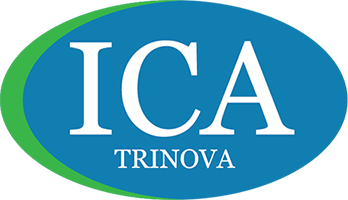1 Beavers St.
Newnan, GA 30263
Cl02 Fumigation of Tomatoes Cantelopes
The distribution and chemical fate of 36Cl-ClO2 gas subsequent to fumigation of tomatoes or cantaloupe was investigated as were major factors that affect the formation of chloroxyanion byproducts. Approximately 22% of the generated 36Cl-ClO2 was present on fumigated tomatoes after a 2 h exposure to approximately 5 mg of 36Cl-ClO2. A water rinse removed 14% of the radiochlorine while tomato homogenate contained ∼63% of the tomato radioactivity; 24% of the radiochlorine was present in the tomato stem scar area. Radioactivity in tomato homogenate consisted of 36Cl-chloride (≥80%), 36Cl-chlorate (5 to 19%), and perchlorate (0.5 to 1.4%). In cantaloupe, 55% of the generated 36Cl-ClO2 was present on melons fumigated with 100 mg of 36Cl-ClO2 for a 2 h period. Edible cantaloupe flesh contained no detectable radioactive residue (LOQ = 0.3 to 0.4 μg/g); >99.9% of radioactivity associated with cantaloupe was on the inedible rind, with <0.1% associated with the seed bed. Rind radioactivity was present as 36Cl-chloride (∼86%), chlorate (∼13%), and perchlorate (∼0.6%). Absent from tomatoes and cantaloupe were 36Cl-chlorite residues. Follow-up studies have shown that chlorate and perchlorate formation can be completely eliminated by protecting fumigation chambers from light sources.
Cl02 Post Harvest Tomato Treatments
Chlorine dioxide (ClO2) gas shows potential as a postharvest sanitizing treatment for fresh market tomatoes. Previous tests with ClO2 applied at 1 to 2 mg·kg-1 of tomato resulted in a significant reduction in recoverable bacterial populations and in the incidence of soft rot in inoculated wounds. However, treatment with 88 or 99 mg·kg-1 produced bleached and sunken wounds and stem scars, whereas effects of these high treatments on the ripening or other quality factors were not recorded. Here, standard round tomatoes from three commercial harvest/handling steps (field pack of light reds, green fruit post ethylene gas treatment, and green fruit prior to the dump tank at the packinghouse) were exposed to a standard or 10× standard dose of ClO2 gas for 2 hours and were then ripened at 20°C for up to 6 days to evaluate the effects of an overdose on fruit quality.
Cl02 Residue Data for Tomatoes Cantelopes
Chlorine dioxide gas is effective at cleansing fruits and vegetables of bacterial pathogens and(or) rot organisms, but little data are available on chemical residues remaining subsequent to chlorine gas treatment. Therefore, studies were conducted to quantify chlorate and perchlorate residues after tomato and cantaloupe treatment with chlorine dioxide gas. Treatments delivered 50 mg of chlorine dioxide gas per kg of tomato (2-h treatment) and 100 mg of gas per kg of cantaloupe (6-h treatment) in sealed, darkened containers. Chlorate residues in tomato and cantaloupe edible flesh homogenates were less than the LC−MS/MS limit of quantitation (60 and 30 ng/g respectively), but were 1319 ± 247 ng/g in rind + edible flesh of cantaloupe. Perchlorate residues in all fractions of chlorine dioxide-treated tomatoes and cantaloupe were not different (P > 0.05) than perchlorate residues in similar fractions of untreated tomatoes and cantaloupe. Data from this study suggest that chlorine dioxide sanitation of edible vegetables and melons can be conducted without the formation of unwanted residues in edible fractions.
Reduction of Salmonella w_Cl02
Chlorine dioxide (ClO2) off-gassed from an aqueous solution and reacted incrementally with potassium iodide solutions (sinks). After 30 min, 45% of the initial dose was detected as chlorite ion in the sink, whereas 35% of the initial dose was still in the source. Aqueous solutions of ClO2 can be used as a source of ClO2 gas in various laboratory experiments involving treatment of fruits or vegetables. Movement from source to sink is continuous, which precludes the development of large headspace concentrations and the need for a tight chamber seal. When the source solution has dissipated, the chamber can be opened safely as there is little free ClO2 remaining in the headspace. In tests with whole, wound-inoculated tomato fruit, at both green and pink stages of ripeness, the control of Salmonella enterica serotype Typhimurium in wounds varied with the weight of gas used. The number of viable cells of Typhimurium recovered was reduced by 5 log units when 0.5 mg of ClO2 was applied to three pieces of fruit during a 2-h treatment.

